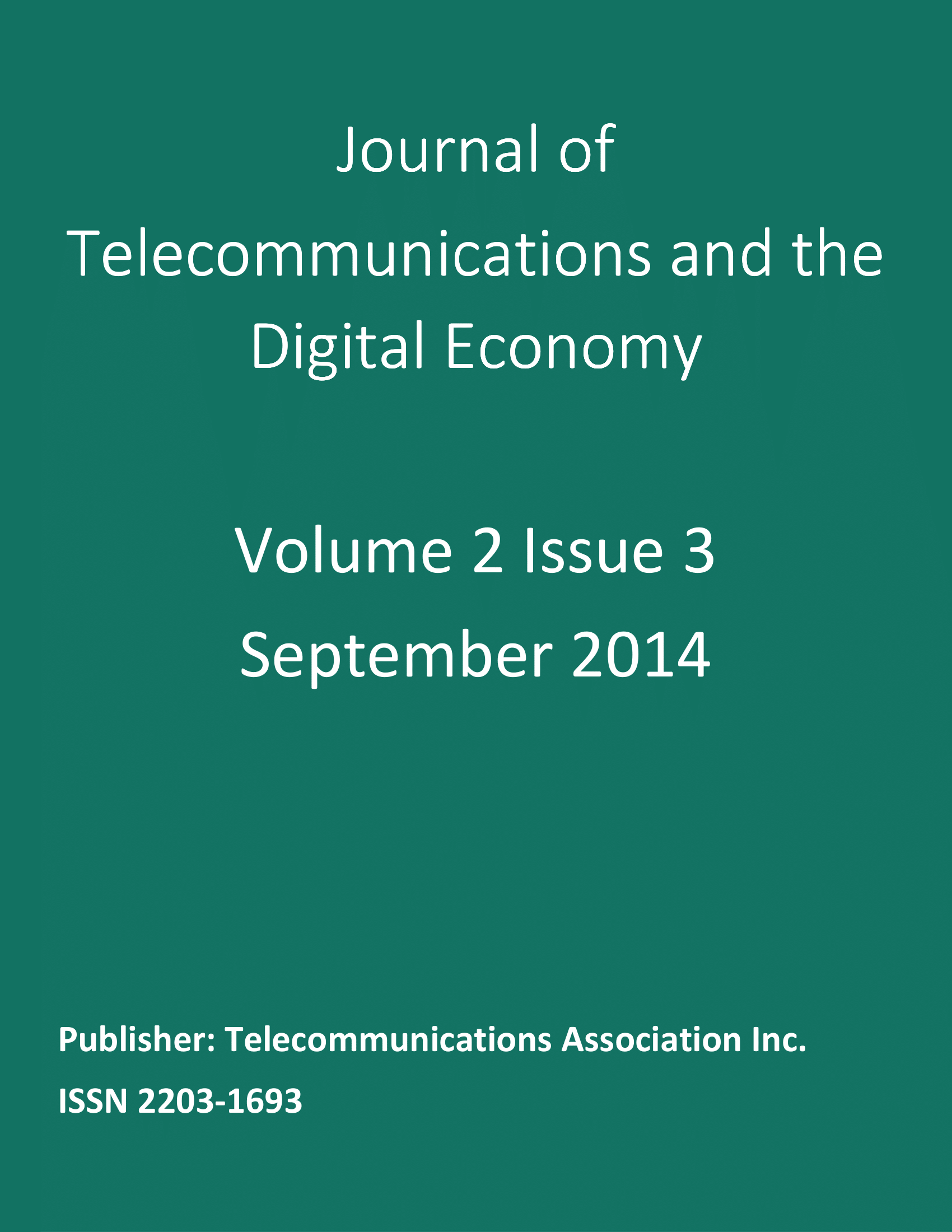Towards Green and Soft: 5G Design Considerations
Main Article Content
Keywords
5G
Abstract
As the commercial deployment of 4G systems is picking up, technologists worldwide are beginning to search for next-generation wireless solutions to meet the anticipated demands in the 2020 era given the explosive growth of mobile Internet and the Internet of Things (IoT). This article presents our perspectives of the 5G technologies with two major themes: Green and Soft. By rethinking the Shannon theorem and traditional cell-centric design, network capacity can be significantly increased while network power consumption is steady or even decreased. The feasibility of the combination of Green and Soft is investigated through five interconnected areas of research: energy efficiency and spectral efficiency co-design, no more cells, rethinking signalling/control, invisible base stations, and full duplex radio.
References
Chih-Lin I; Shuangfeng Han; Yami Chen; Gang Li. 2014. ‘Trillions of nodes for 5G!?,’ submitted to ICCC 2014.
China Mobile Research Institute. 2011. ‘C-RAN: The Road Towards Green RAN,’ Oct. 2011, available at: http://labs.chinamobile.com/cran.
Chiosi, M; Clarke, D; Willis, P. 2012. ‘Network Functions Virtualization,’ Oct. 2012.
Hua, Y; Liang, P; Ma, Y; Cirik, A. C; Gao, Q. 2012. ‘A Method for Broadband Full-Duplex MIMO Radio’, IEEE Signal Process. Lett., vol. 19, no. 12, Dec. 2012, pp. 793-79
Jain, M; Choi, J; Bharadia, D; Seth, S; Srinivasan, K; Levis, P; Katti, S; Sinha, P. 2011. ‘Practical, Real-time, Full Duplex Wireless’, MobiCom’11, 2011.
Jian Zhang; Lianhai Shan; Honglin Hu; Yangyang. 2012. Mobile cellular networks and wireless sensor networks: toward convergence, IEEE Communication Magazine, vol. 50, issue. 3, pp. 164-169, Mar. 2012
Knox, M. E; 2012. ‘Single antenna full duplex communications using a common carrier’, Wireless and Microwave Technology Conference (WAMICON), 2012 .
Li, G. Y. et al., 2011. ‘Energy-Efficient Wireless Communications: Tutorial, Survey, and Open Issues,’ IEEE Wireless Commun., vol. 18, no. 6, Dec. 2011, pp. 28-35.
Marzetta, T. 2012. ‘Noncooperative Cellular Wireless with Unlimited Numbers of Base Station Antennas,’ IEEE Trans. Wireless Commun., vol. 9, no. 11, Nov. 2010, pp. 3590-3600.
Renzo, M. D; Haas, H; Ghrayeb, A; Sugiura, S; Hanzo, L. 2014. ‘Spatial modulation for generalized MIMO: challenges, opportunities and implementation,’ Proc. IEEE, vol. 102, no. 1, Jan. 2014, pp. 56-103.
Shuangfeng Han; Chih-Lin I; Corbett Rowell; Zhikun Xu; Sen Wang; Zhengang Pan. 2014. ‘Large Scale Antenna System with Hybrid Digital and Analog Beamforming Structure,’ International Communication Conference (ICC) workshop 2014.
Skillermark, P; Frenger, P. 2012. ‘Enhancing Energy Efficiency in LTE with Antenna Muting,’ IEEE VTC Spring ‘12, 2012, May 2012, pp. 1-9.
Tarik Taleb; Kunz, Andreas. 2012. ‘Machine Type Communications in 3GPP Networks: Potential, Challenges, and Solutions’, IEEE Communications Magazine, Mar. 2012, pp. 178-184.
The Climate Group. 2008. ‘Smart 2020: Enabling the Low Carbon Economy in the Information Age,’ available at http://www.smart2020.org.
Third Generation Partnership Project. 2011. 3GPP TS 37.868 v11.0.0. Study on RAN Improvements for Machine-type Communications, Release 11, Sep. 2011





